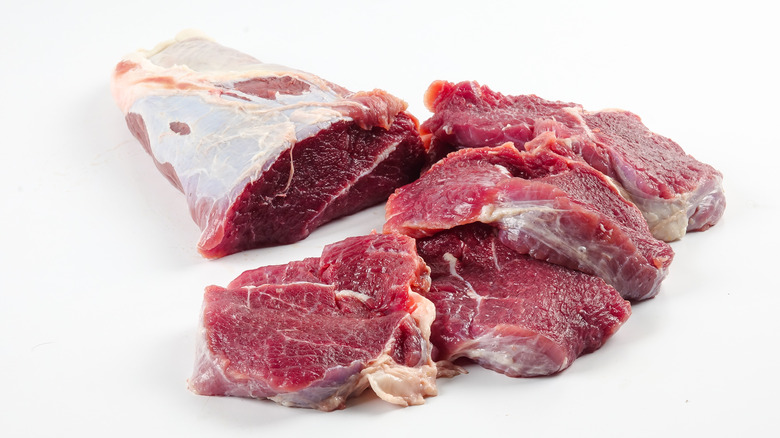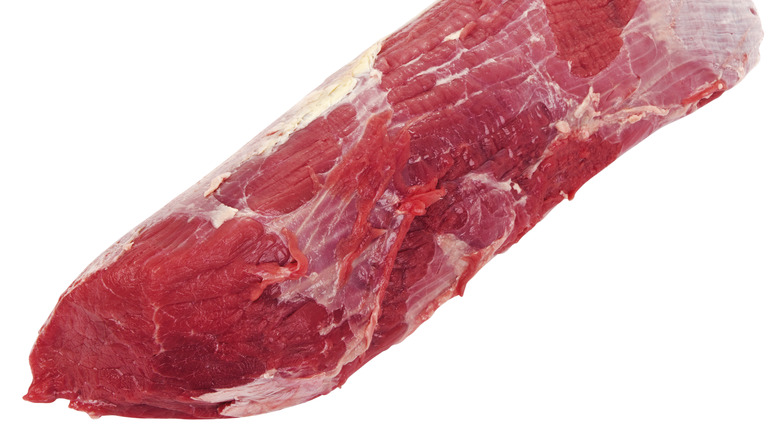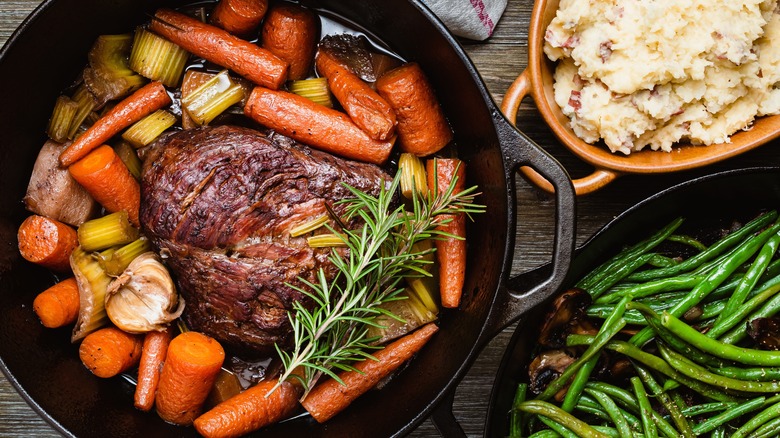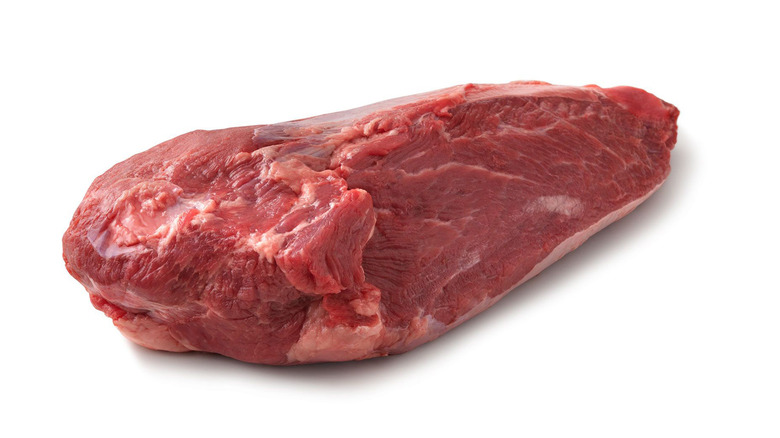Scotch Tender Is The Ultra-Lean Cut Of Meat You Should Know
Undoubtedly, lean cuts of beef don't boast the preparation ease of fatty ones. For example, a ribeye's fat content is so dense and well-distributed that it'll turn out tasty with a range of cooking methods. However, that doesn't mean lean beef should be left at the butcher counter.
When treated with the right technique, such cuts will still offer a delicious textural and flavorful experience. Not to mention they're easier to consume as part of a balanced diet and cheaper, too. And there are few cuts as lean — but still fun to cook with — as scotch tender.
This cut of meat is also referred to as mock tender and chuck tender, but let's get one thing straight: This cut isn't naturally very tender. Instead, its name derives due to its visual similarity to a tenderloin. And in fact, it's actually sourced from a completely different part of the cow.
What is scotch tender?
Scotch tender is part of the chuck primal, a cut located in the shoulder of the cow. Since it's part of the front leg's mechanisms, the section is prone to movement and, therefore, tough in texture. But its advantage lies in its flavor since the chuck region boasts an especially beefy palate. When prepared properly, the cut will shine with its delicious taste.
The cut is derived from the same area as a chuck tender steak and roast, which lends it a similar fat and protein content. However, it's butchered differently, with an elongated shape and tip that makes it stand out. Even visually, you can see the ratio of fat to meat is quite slim, which makes it an especially favorable nutritional choice. For example, if you have a 3-ounce serving, expect only 2 grams of saturated fat along with a hefty 28 grams of protein.
How to cook with scotch tender
This lean cut is best suited for long, low-temperature cooking techniques. Consider using it for a pot roast, since scotch tender is satiated with connective muscular tissue. When braised, it'll produce those thin and tasty slivers of beef. In France, the cut is frequently utilized for a slow-cooking braise known as rôti de palette. The scotch tender is slowly broken down in a beef broth liquid flavored with mustard, herbs, and a sweetener.
Scotch tender can be prepared as a steak, especially when aided by a marinade. Reach for components like vinegar, Worcestershire sauce, lemon juice, and soy sauce to tenderize. Then sear on a hot pan, only a few minutes per side. Finish in an oven at a lower temperature of around 225 degrees Fahrenheit — such a longer duration at a lower temperature will enable breaking down the meat. Make sure to allow to rest, then slice thin before serving.
Especially since the steak is butchered thin, it'll be difficult to achieve a pink color. However, scotch tender's beef-forward flavor will compensate. Rather than simply serving it on its own, consider integrating it into a taco or dressed in a mushroom sauce alongside potatoes.
Where to buy scotch tender
As a more obscure cut of beef, it's unlikely you'll come across scotch tender prepackaged on a supermarket shelf. Instead, purchase from a specialty butcher shop, or request your local meat counter for a designated butchering. Alternatively, the cut can also be purchased online via shops like Divico or Up North Heritage Farm. When buying in person, look for scotch tender that's purplish to bright red in color. A little brown tint is usable; however, avoid beef that has an off-putting smell and feels slimy.
Additionally, don't confuse the cut with a tenderloin, which necessitates a much shorter cooking time. Steaks are occasionally simply labeled as tender without a clarification of the source. Verify by asking the butcher whether the cut's derived from the chuck, and make sure to glance at the price, since scotch tender should be one of the cheapest beef cuts available. Nevertheless, with a patient approach, its delicious flavor will shine; all the more reason to seek it out.



